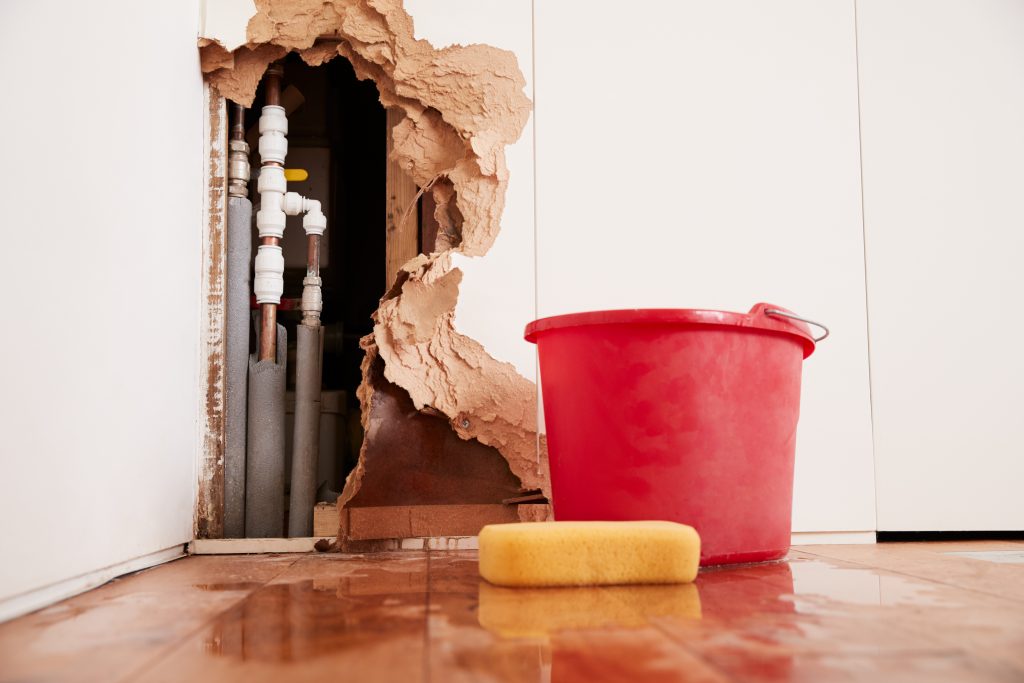Unearthing Concealed Water Line Leaks: 6 Effective Strategies
Unearthing Concealed Water Line Leaks: 6 Effective Strategies
Blog Article
Everyone is bound to have their own perception on the subject of Top leak detection hacks.

Early discovery of dripping water lines can mitigate a prospective catastrophe. Some little water leakages might not be noticeable.
1. Check Out the Water Meter
Checking it is a surefire way that helps you discover leaks. If it relocates, that shows a fast-moving leakage. This indicates you might have a sluggish leak that could even be below ground.
2. Inspect Water Usage
If you detect unexpected modifications, despite your intake being the very same, it implies that you have leaks in your plumbing system. An unexpected spike in your bill shows a fast-moving leak.
Meanwhile, a constant boost every month, even with the very same practices, reveals you have a sluggish leakage that's likewise slowly intensifying. Call a plumber to thoroughly examine your building, particularly if you really feel a warm location on your flooring with piping beneath.
3. Do a Food Coloring Examination
When it comes to water usage, 30% comes from commodes. If the color somehow infiltrates your dish throughout that time without flushing, there's a leak between the container and also dish.
4. Asses Outside Lines
Don't fail to remember to examine your outdoor water lines as well. Examination spigots by attaching a yard hose. Should water permeate out of the connection, you have a loosened rubber gasket. Change this and also guarantee all links are limited. It will certainly help get it expertly analyzed as well as preserved every year if you have actually obtained a sprinkler system. One little leak can lose tons of water as well as increase your water costs.
5. Evaluate the scenario and evaluate
Property owners must make it a habit to inspect under the sink counters and also also inside cupboards for any type of bad odor or mold and mildew growth. These two red flags show a leakage so timely interest is required. Doing regular examinations, even bi-annually, can conserve you from a significant issue.
Examine for stainings and also damaging as many pipes and appliances have a life expectancy. If you presume dripping water lines in your plumbing system, do not wait for it to intensify.
Early detection of dripping water lines can alleviate a prospective catastrophe. Some small water leaks may not be noticeable. Inspecting it is a surefire method that aids you find leakages. One little leak can lose loads of water and also spike your water costs.
If you suspect leaking water lines in your plumbing system, do not wait for it to escalate.
The Dangers of Undetected Water Leaks
Mold
One of the most common results of undetected water leaks in your home is mold. Under the right conditions, mold can begin to grow and spread in just a day or two.
Moisture from water leaks combined with humidity and lack of ventilation allow mold spores to germinate and start spreading.
And while household mold doesn’t carry the same health risks as substances like asbestos, they can cause allergic reactions in people sensitive to them or with asthma.
Structural Damage
When water leaks occur in places we can’t see — above the ceiling, behind walls or beneath floors — they often have time to do some serious damage before making themselves known.
You might notice cracks or bubbles appear in your walls or a slow drip or water from the ceiling.
These are signs of water leaks and buildups in the structure of your home. If you don’t jump on these problems soon enough, the wood frame that supports your house could start rotting, leading to costly repairs and increasing the risk of disasters like ceiling or wall collapses.
Water Waste
According to the Alliance for Water Efficiency, the average home can lose anywhere from 2,000 to 20,000 gallons of water per year due to leaks.
High numbers like that might make you imagine a burst pipe spewing out water. But believe it or not, even a small, constant drip from a kitchen sink could add up to over a thousand gallons of wasted water in a single year.
And if you live in a place where you pay for every gallon of water you use, that adds up to a lot of dollars down the drain. So we understand leaks are bad. Let’s take a look at some of the common (and not-so- common) water leaks you might find around your home.
Flush Valve Flapper
The flush valve flapper is a rubber flap that sits above the flush valve at the bottom of the tank. It’s attached to the flusher with a chain. Over time, it can get worn out and lose its seal, causing an endless flow of water into the toilet bowl.
These leaks are hard to detect since they’re usually silent, but there’s a little insider trick you can use with just a little dye or food coloring:
Put a few drops in the toilet tank. Check the water in your toilet bowl 15 minutes later. If any of the color made it into the toilet bowl, you’ll know what the culprit is.
Fill Valve
The fill valve is what replenishes your toilet’s tank water after you flush. If you’ve ever looked inside your toilet tank and seen water gushing out of an upright plastic valve, that’s a faulty fill valve.
https://meetflo.com/blogs/flo/how-to-find-and-repair-water-leaks-a-comprehensive-guide

As an enthusiastic person who reads on Detecting hidden plumbing leaks, I assumed sharing that piece of writing was a good idea. Sharing is nice. Helping people is fun. Kudos for your time. Don't hesitate to visit our blog back soon.
Find Out More Report this page